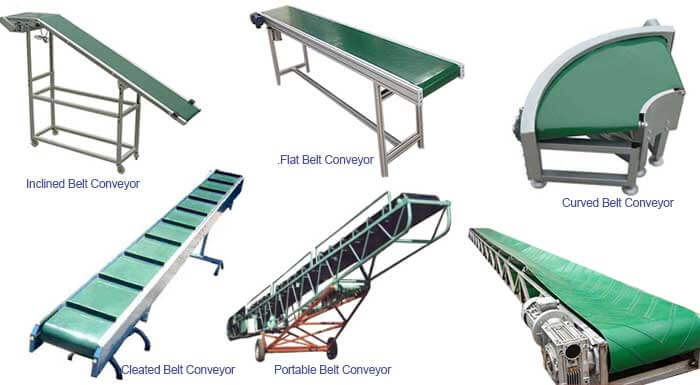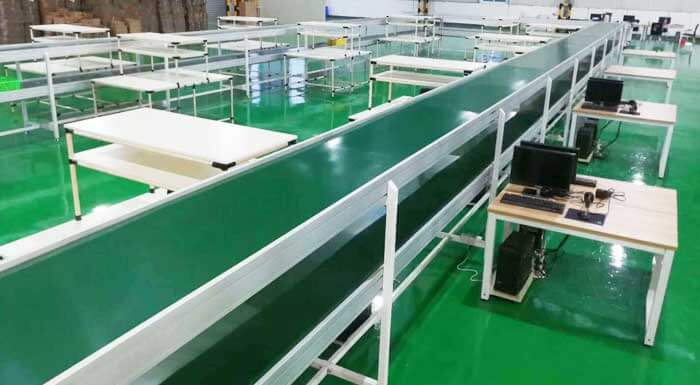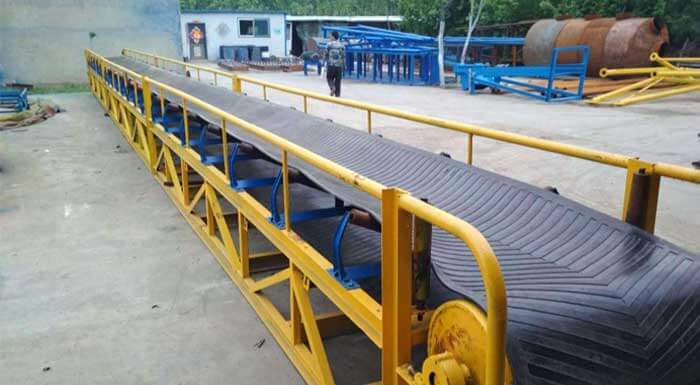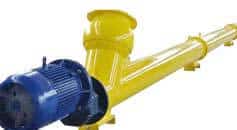Conveyor Belt Working Principle & Application
Conveyor belts are an essential component of various industries, and their working principle is based on the movement of a continuous belt around two or more pulleys. The belt is supported along its length by idler rollers, which allow it to move along the rollers and provide support for the conveyed material.
The basic principle behind the conveyor belt is to move materials along the belt from one location to another. In many cases, this movement is powered by an electric motor, which drives the belt by means of a pulley system. The belt itself is typically made of rubber, PVC or other materials that are durable and have good traction properties to prevent the material from slipping off the belt.

The conveyor belt is designed to carry materials horizontally or at an incline, and it can be used to transport a wide variety of products, such as coal, grain, ore, sand, and even small parts. The belt can be configured to transport the materials at a steady speed, or it can be adjusted to meet the needs of the application.
Conveyor Belt Working Principle
The working principle of the conveyor belt is straightforward: the belt rotates around a series of pulleys, which are powered by an electric motor. The motor drives the pulleys, which in turn move the belt. The belt is supported by idler rollers along its length, which enable it to move along the rollers, providing support for the material being transported.

As the belt moves along its path, it passes over a series of rollers or idlers, that provide support for the belt and allow it to move smoothly. The idler rollers are typically made of steel or other durable materials, and they are spaced apart along the length of the conveyor to provide consistent support.
In order to load or unload materials onto the conveyor belt, a loading chute or discharge chute is typically used. These chutes are designed to guide the material onto the conveyor belt and prevent it from spilling on the ground. For example, in a quarry, a front-end loader may be used to load material onto the conveyor belt, which then transports the material to a processing plant.
Overall, the working principle of a conveyor belt is simple yet effective. By using a continuous belt that is powered by an electric motor and supported by idler rollers, materials can be transported over long distances or along an incline. With their versatility and reliability, conveyor belts have become an essential component of many industries, from mining and quarrying to manufacturing and logistics.

Conveyor Belt Applications
Conveyor belts are widely used in a variety of industries and applications, including:
- Manufacturing: Conveyor belts are commonly used in manufacturing facilities to transport raw materials, finished goods, and supplies. They are also used in assembly lines to move products from one station to the next.
- Mining: In the mining industry, conveyor belts are used to transport minerals and ores from the mine to the processing plant or storage facility.
- Agriculture: Conveyor belts are used in agriculture to transport products like grain, fruit, and vegetables from one location to another.
- Logistics and Distribution: Conveyor belts are commonly used in warehouses and distribution centers to transport packages, boxes, and pallets.
- Food Industry: Conveyor belts are used in food processing to move products through various stages of production, including washing, sorting, grading, and packaging.
- Airport Baggage Handling: Conveyor belts are commonly used in airports to transport luggage from the check-in counter to the airplane.
- Postal Services: Conveyor belts are used in post offices and sorting facilities to move mail and packages from one location to another.
- Textile Industry: Conveyor belts are used in the textile industry to move fabrics and garments through various stages of production, including cutting, sewing, and packaging.
 10 Belt Conveyor Types & 5 Types of Conveyor Belt Materials
10 Belt Conveyor Types & 5 Types of Conveyor Belt Materials 10+ Tips Help To Select A Right Conveyor Belt
10+ Tips Help To Select A Right Conveyor Belt Hot 10 Types of Belt Conveyor Troubleshootings
Hot 10 Types of Belt Conveyor Troubleshootings Screw Conveyor Features | Working Principle and Types
Screw Conveyor Features | Working Principle and Types


This was good information and I really appreciate. It gave me a very good insight about conveyor belts, their basic principle, mode of operation, and the types of conveyors.
thank you sir